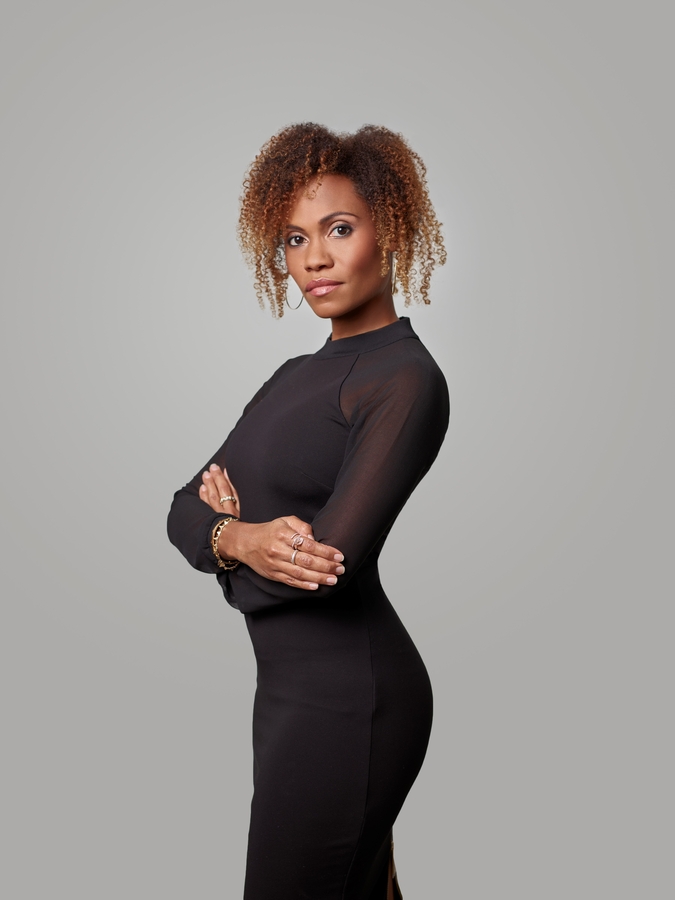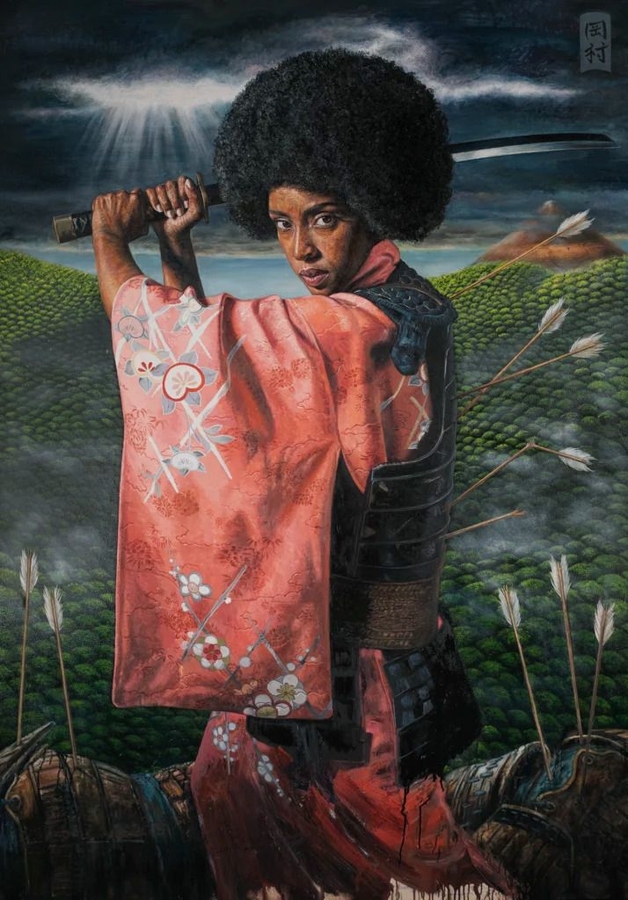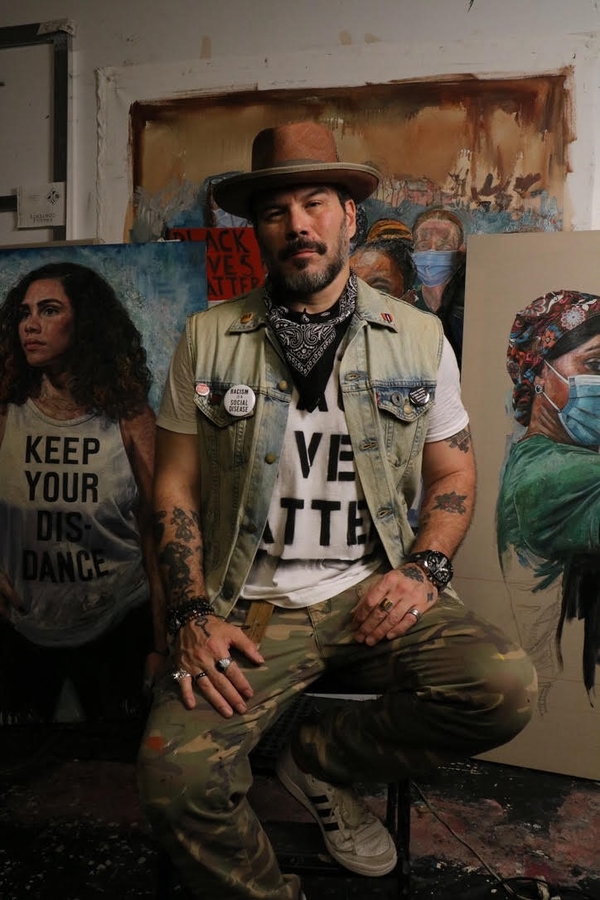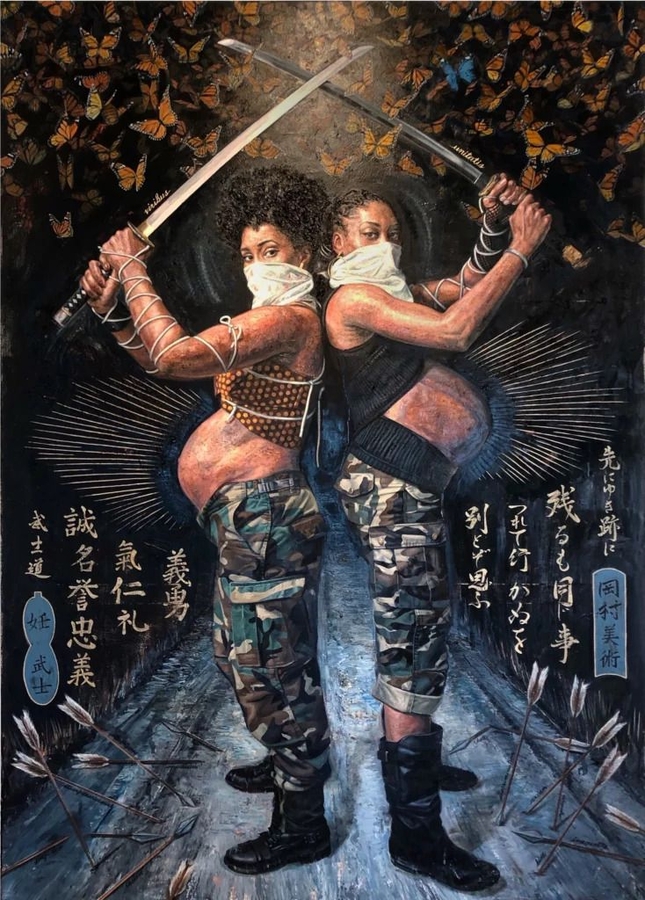All Press Releases for January 26, 2024
Curator Karla Ferguson's Work Shines in Tim Okamura's Onna-Bugeisha: Warriors of Light on Display Now at Pittsburgh's August Wilson African American Cultural Center
Closing Reception with Ferguson and Okamura Set for February 15, 7:30 – 9:00 pm
"Use your voice. Change the narrative. Stand up and create art about what is important to you whether it be climate change or oppression. It's all political." -- Karla Ferguson
PITTSBURGH, PA, January 26, 2024 /24-7PressRelease/ -- A "curator" is a keeper or a custodian of a museum or other collections. Traditionally the work of a curator is invisible. Aloof discretion is the goal. Curators gently nudge viewers. They are art influencers rarely in the spotlight. A perfectly curated collection doesn't show off the organizational skill of the curator. It allows the artist to shine.
Miami-based gallery owner and art advisor Karla Ferguson is radically reimagining the conventional role of curator. She aims to blow up highbrow, inaccessible attitudes of traditional curators and gallerists who are mostly "white men" presenting art that excludes voices from the margins. Ferguson wants to change that with her own revolutionary take on what it means to be in the art world. What's important to Ferguson, a Black woman from Jamaica, is to be strongly political, to be inclusive, to make people think through powerful representative art. She asks, "How else can you change the world?"
Traditionalists would argue that a curator, like a newspaper reporter, should be neutral, offering a balanced perspective to ensure the integrity and fairness of the collection. Otherwise, there is the potential to alienate audiences accustomed to a less radical approach. But it's that emphasis on balance that inadvertently kept artists of color and women out of major art institutions for centuries. Society is at a turning point and institutions are adapting. People of all colors and sexual orientations suddenly have creative outlets in galleries, film, television and music. Audiences have found them. People who aren't white men are finally seeing themselves represented across the cultural spectrum. The pendulum swings.
"We have got to get back to balance in our society and we can do that through art," she says emphatically. The exhibit she recently curated, Onna-Bugeisha: Warriors of Light, with mixed media paintings by the Canadian-born Brooklyn-based artist Tim Okamura, is on view at the August Wilson African American Cultural Center (AWAACC) in Pittsburgh through February 18, 2024. It is the artist's first major institutional solo show after a long collaboration with the curator. The exhibit includes large-scale work, paintings and installations.
Ferguson, who came to the United States from Jamaica as a second grader, is an example of the immigrant whose parents had high expectations for their children to succeed. She didn't disappoint. Ferguson studied political science and international relations at Florida International University, business at the Sorbonne and earned a law degree from Tulane University School of Law. She comes from a family of artists and musicians and grew up surrounded by culture. "I always took art classes. I loved art history, but my focus was on everyday practical degrees," she says.
It was at Tulane where she first became involved with civil and human rights working with the Innocence Project at the notorious Angola prison. She grew frustrated at the slow pace of the law and wanted things to happen without having to wait for years for a trial. Tulane was also where she was introduced to the idea of being an agent and how to further other people's careers. It also made her empathetic to the underdog, the powerless and those people whose stories often go untold. "The media is a far more powerful tool than the law. Put art in someone's face and the response is immediate. The information is being passed around."
Ferguson is the founder of the Yeelen Group, an award-winning company specializing in brokering fine art with a focus on a diverse group of artists. She is also a gallerist in the Little Haiti neighborhood of Miami. She believes artists should be bold and politically outspoken. Her goal is to reach people who are underrepresented or feel unseen. With an interest on representational art rather than abstract, which she thinks is intimidating, she's hell bent on telling stories about fighting oppression or rising from repression. She opened her gallery instead of becoming a corporate lawyer because she thought her law degree could be used to help artists and build a community. The process is slow and surprising in many ways. During Art Basel Miami, "very wealthy people come into the gallery. The first thing they ask is to be directed to the owner even though I'm introducing myself to them. They expect a man because most galleries are run by older white men. That is what they're used to. They assume I'm an assistant instead of running the space. To change the narrative, people have to understand that there are all types of people working in this field."
To expose those underserved by traditional museums and as part of her community outreach, she regularly reaches out to bring in locals who may have little or no access to art and creators. "People in Little Haiti can be intimated by museums. A lot of the budget for the arts gets cut in schools," she bemoans. "Being able to come here and meet artists and see the work can be transformative." Ferguson opens her gallery to students and hosts award shows for the locals and panels on civil rights. She tries to inform kids that, "all art is political, even the decorative stuff."
In the exhibition at the August Wilson African American Cultural Center, many of Ferguson's ambitions are on display. The show imagines an alternate dystopian reality where oppression is on the rise. "It's based on a legal theory of fascism," she says.
All of Ferguson's curating work is based on legal theory. In 2015 she curated What's Inside Her Never Dies at her Miami gallery to address how Black women are often typecast as pillars of strength. More recently she thought, "what if there was this group of women who took the charge to defend the defenseless, this band of women who would come into battles and fight oppression." She and the artist, Tim Okamura, discussed the possibility at length. "I am helping Tim tell the story. He masters the imagery. These women are taking the charge and trying to bring back the balance in society." Work began in 2014 and continued all through the pandemic, as did their conversations. They landed on a theme of the Onna-Bugeisha or Japanese female warrior. "When Tim started this series, it was a time when totalitarian political scenarios became possible," says Ferguson of the years leading up to the election of Donald Trump. "We were feeling powerless as a society to stop what was actually taking place."
Artist and curator also bonded over their shared mixed heritages. Ferguson's family hails from Jamaica with international roots. Her mother's ancestors came from Panama, Germany, Scandinavia and Africa; her father's origins are from China, Africa and Europe. Okamura is Japanese Canadian. Both have felt like outsiders. Depicting Black women as Samurai warriors had historical precedent. There is evidence that the concept of a female samurai existed in Africa before entering Asia as part of the African diaspora.
The show is a visual explosion of color, epic in scale with powerful imagery. The most striking aspect is the larger than life presence of each warrior. Next is the attention to detail. Each brushstroke is visible, like a Van Gogh. Then there is a background that continues to reveal new elements and symbols, some as small as butterflies and flower petals. Much like Hieronymus Bosch's The Garden of Earthly Delights, the longer the viewer looks at the painting the more they see. The revelations keep arriving. As Ferguson notes, "It gives a docent a lot to talk about."
One of Ferguson's favorite works in the show is Ebony Obsidian The Unbreakable, a depiction of the actress seen in If Beale Street Could Talk. She wears a tangerine colored kimono with flowers and rectangular flowing sleeves. In her hands she brandishes a sword overhead ready to strike. The details are impressive down to the shape of her fingernails. Her massive afro draws the eye up to a moonlit sky. Her body fills a moss colored grassy valley. She stares out just beyond the viewer with a determination, ready to take whatever comes next. On her backside and around her body feathered arrows penetrate, but she does not flinch. The curator loves this work for many reasons. "Tim's work is attractive. He trained in classic arts and portraiture, and it shows. Ebony is feminine but she continues fighting like we do in real life. She's superhuman and keeps pushing."
Another of the works, The Expectant Guard Painting, features two of the Warriors of Light, with backs touching and baby bumps protruding over the tops of their camouflage trousers. Overhead they cross swords under a mysterious light. Their faces are shrouded in masks, with only their eyes visible. Despite their condition they gaze out defiantly. Ferguson identifies with these women. "I'm a mom," she says. "It's maternal to protect. I want to show my daughters how to fight in different ways."
Despite their portrayed strength, some of these warriors will not win the battle and will have alternative narratives. Ferguson notes it's essential to tell the stories of people who aren't the victors. Victors always get to tell the stories. "Let's try and listen to the vanquished, because they're rarely heard." she says.
The opening night of Onna-Bugeisha: Warriors of Light at the AWAACC brought all of Ferguson's visions of art and community together demonstrating how unity shines brightest. The female warriors depicted were based on real people. Some of the models, including Ebony Obsidian, attended the opening and posed against their paintings. Their likenesses were uncanny. The effect was surreal. Some of the models were even dressed as they were in the paintings. Beyond the terrific art on the walls, The Legacy Arts Project, a Pittsburgh non-profit fighting to preserve traditions of African Art, brought the funk with live dancing and drumming.
Ferguson is proud of the event because it represented hard work but also because it is an example of the "spirit of unity," that is important to her as a curator, a mother and potential warrior. It's indicative of the melting pot that is America. Ferguson, who believes that art can change the world, has a message for artists: "Use your voice. Change the narrative. Stand up and create art about what is important to you whether it be climate change or oppression. It's all political."
CLOSING RECEPTION
A closing reception will be held in the gallery on Thursday, February 15, from 7:30-9:00 pm. Produced by Kimberly Jacobs, the AWAACC's Exhibition Manager and Assistant Curator, the evening will include a taiko and African drumming performance and other activities. For more information on Onna-Bugeisha: Warriors of Light, visit https://awaacc.org/exhibition/onna-bugeisha-warriors-of-light/.
ABOUT THE ARTIST
Born in Edmonton, Canada, Tim Okamura began his artistic journey at the Alberta College of Art and Design in Calgary, where he earned his B.F.A. with Distinction. He further honed his skills at the School of Visual Arts in New York, graduating with an M.F.A. in Illustration as Visual Journalism in 1993. Okamura is an internationally acclaimed artist celebrated for his unique style that combines traditional oil painting techniques with mixed media and elements of abstraction filtered through a contemporary urban perspective. His work focuses on themes of identity, resilience, representation, and community, and has been exhibited around the globe, earning a place in numerous museums and prestigious private collections. Tim Okamura's immense talent has garnered him numerous prestigious awards and recognition. He received the Fellowship in Painting from the New York Foundation for the Arts in 2004 and has been selected nine times for the esteemed BP Portrait Award Exhibition at the National Portrait Gallery in London, England. His artistry has also been displayed in several permanent public collections, including The Smithsonian National Portrait Gallery, The New York Historical Society Museum, The Davis Museum at Wellesley College, The Alberta Foundation for the Arts, The Toronto Congress Center, and Standard Chartered Bank in London, England.
The August Wilson African American Cultural Center is a non-profit cultural center located in Pittsburgh's cultural district that generates artistic, educational, and community initiatives that advance the legacy of Pulitzer Prize-winning playwright August Wilson. One of the largest cultural centers in the country focused exclusively on the African American experience and the celebration of Black culture and the African diaspora, the non-profit organization welcomes more than 119,000 visitors locally and nationally. Through year-round programming across multiple genres, such as the annual Pittsburgh International Jazz Festival, Black Bottom Film Festival, AWCommunity Days, TRUTHSayers speaker series, and rotating art exhibits in its galleries, the Center provides a platform for established and emerging artists of color whose work reflects the universal issues of identity that Wilson tackled, and which still resonate today.
# # #
Contact Information
August Wilson African American Cultural Center
Pittsburgh, PA
United States
Voice: 2127213341
E-Mail: Email Us Here
Website: Visit Our Website




